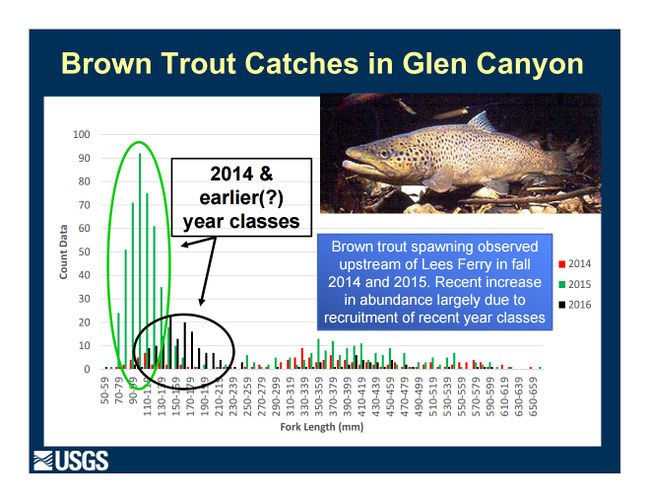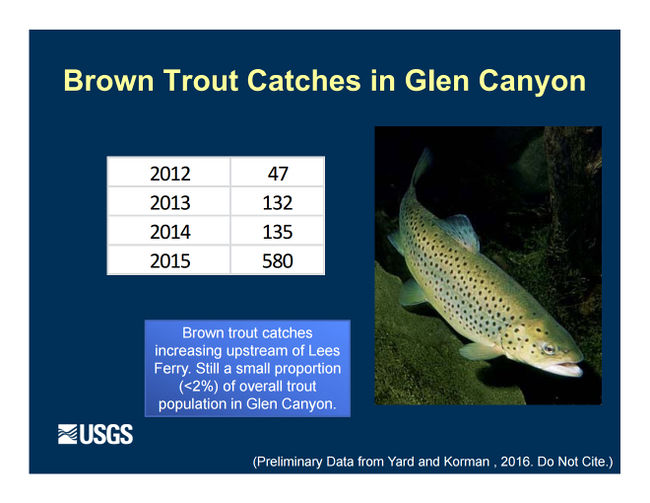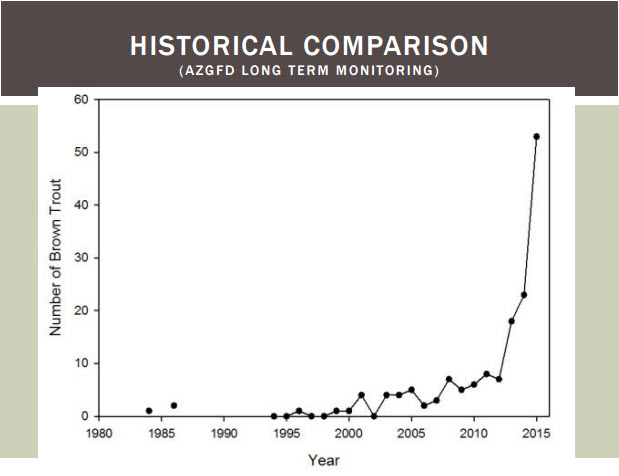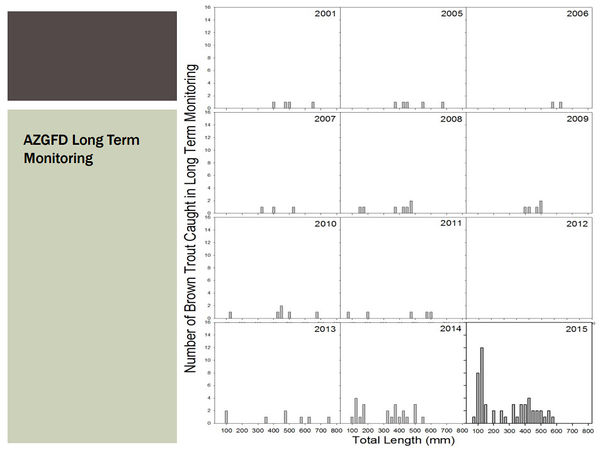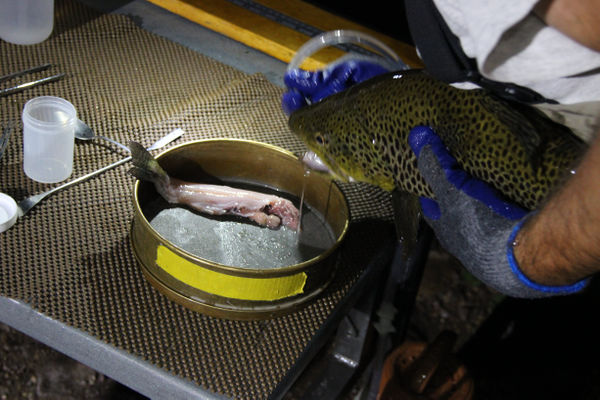Updates
|
This webinar has been postponed until sometime later in November 2016
Hi TWG,
As many of you all know by now, recent field work in Glen Canyon resulted in an higher number of brown trout captures compared to last year. I have received numerous inquiries from TWG members who want to learn more about the status of brown trout downstream from Glen Canyon Dam, therefore, please call in for an informational webinar on November XX from XX am to XX pm MST (aka, Arizona) or XX am to XX am Pacific to learn more. Dave Rogowski will present AZGFD data first followed by Josh Korman and Mike Yard who will present data from the natal origins project. After the presentations, we can discuss potential underlying causes of these recent increases.
Thanks,
Seth
WebEx/Conference Call Information
Topic: Brown Trout Discussion
Date and Time: (XX) Nov. XX, 2016 XX:XX am (MST), XX AM (PACIFIC)
Event number: XX
Event password: XX
Panelist password: The Event has no Panelist Password
Go to: XX
Audio conference information
Phone #: XX
Access code: XX
[5]
[6]
[7]
[8]
Brown trout are much more likely to eat other fish (piscivory) but since there are many more rainbow trout in the Colorado River between Glen and Marble Canyons, rainbow trout probably eat more fish numerically than brown trout.[9]
An increasing brown trout population in Glen Canyon could pose a problem for both the Lees Ferry rainbow trout fishery and native fish in Grand Canyon because brown trout eat both rainbow trout and native fish alike. Above is a photo of a brown trout collected during 2016 trout monitoring below Flaming Gorge dam that had just eaten a 10" stocked rainbow trout.
|
|
Information and Links
|
|
|
Stakeholder Concerns
|
- AZDGF recommends to "immediately offramp Fall HFEs" and to hold a stakeholder workshop to determine (1) the root causes of the increases in BT, (2) the risks associated with an expanding BT population to a quality RBT fishery in Lees Ferry and the recovery/conservation of humpback chub and other native fish down river, (3) the pros and cons of different management options to address those risks, and (4) the research needs to support more
informed decisions moving forward.[10]
|
Questions
|
- Why are brown trout increasing in the Lees Ferry reach?
- Has the recent (winter 2014-15) decrease in the rainbow trout population allowed for increased brown trout spawning in the Lees Ferry reach because of decreased competition for spawning area and/or decreased egg predation by rainbow trout? If so, what caused the decrease in the rainbow trout population and what can be done in the future to avoid this from happening?
- Are increased numbers of brown trout in Lees Ferry a product of higher release temperatures?
- Do fall HFEs clean spawning substrate in the Lees Ferry reach leading to increased the spawning success of brown trout during their fall spawning season?
- Do fall HFEs increase the upstream migration of brown trout from other parts of the canyon resulting in more brown trout spawning in the Lees Ferry reach?
- Could delaying a fall HFE to late November be effective in disrupting the brown trout spawn? When do brown trout spawn in Lees Ferry? Ans: Nov-Dec
- Irregardless of the cause, what should we do about the increasing brown trout population currently found in the Lees Ferry reach?
|
Presentations and Papers
|
|
2017
2016
2014
2013
2011
|
Other Stuff
|
|
"The divergent responses of brown trout and rainbow trout populations to the summer flood could be explained by competitive interactions. Brown trout are autumn spawners, whereas rainbow trout are spring spawners, and thus, YOY brown trout emerge earlier, are larger and may outcompete YOY rainbow trout (Gatz, Sale & Loar, 1987; Strange et al., 1992 ). Conversely , the autumn spawning of brown trout increases the risk of egg loss if autumn or winter floods occur. Several investigations showed that YOY brown trout or brook trout were generally more numerous than YOY rainbow trout except during years when floods scoured the eggs of the autumn spawners (Seegrist & Gard, 1972; Strange et al., 1992; Warren et al., 2009 ). " [11]
|
|
